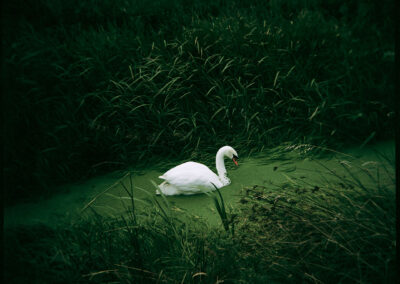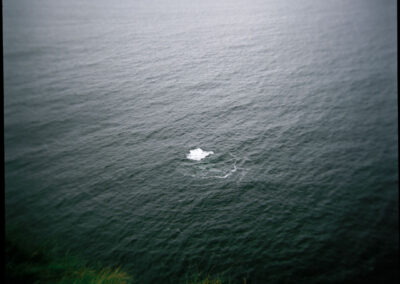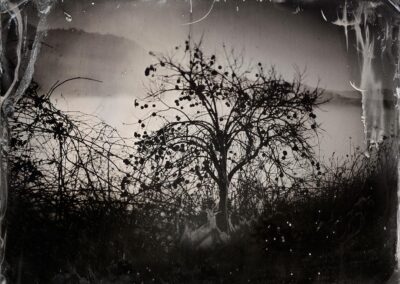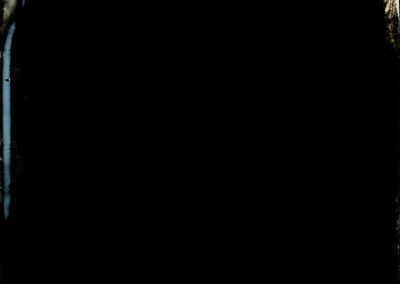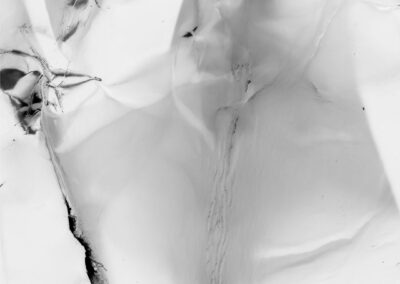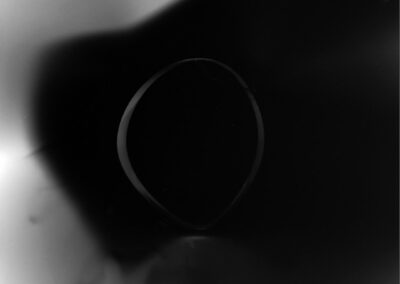Our next Artist You Need To Know is FIONA ANNIS.
Annis is a multidisciplinary artist (often creating environments that employ visuals and sound) whose artwork often intersects with photography in both a contemporary and historical sense. She was born in Glasgow, Scotland and grew up in Manitoba but currently lives and works in Montréal. Annis has a master’s degree from the Glasgow School of Art and an interdisciplinary doctoral degree from Concordia University.
From her site: “Guided by a process-oriented approach, Annis’ practice gravitates around the language of photography, and the subtle matter of light and time acts as a lens to explore themes including impermanence and metamorphosis. In extension, a focus on astral phenomena frequently appears in her projects as a means to consider notions of chance and destiny, and a platform to foster creative resistance and radical hope. In addition to photography, her research and experimentation find expression through a variety of media, including sculpture, installation, and text-based artworks.”
There is a poetic quality to Annis’ works that is most directly reflected in the titles of her various projects (such as A Portion Of That Which Was Once Everything or The Stars Are Dead But Their Light Lives On), but also in the quiet, contemplative nature of her images. Critic and Curator James D. Campbell once asserted that a body of work by Annis “offered viewers a truly sublime haunting, an invitation to partake in a séance with the ghost of photography’s past and portents of its future.” (from here)
One of her bodies of work – The After – Image (Swan Songs) – offered visually arresting images of the sites and locales “where intellectuals, novelists and other artists had produced their final works shortly before their untimely deaths [so that] here photography and death are intimately intertwined.” (Gabrielle Moser, from Canadian Art)
In a manner that could be considered an extension of Annis’ interest in both the history of photography and older, analog methodologies of the medium, she is also the co-founder of the The Society of Affective Archives which is “an entity dedicated to collaboration, the production of affective archives and the conservation of peripheral knowledge.”
Annis has an impressive exhibition record, and has had shows at the AC Institute (New York City), the Canadian Centre for Architecture (Montréal), Goldsmith’s University (London), Low Salt Gallery (Glasgow), Museo Novecento (Naples), Gallery44 (Toronto), VU Photo (Québec City) and the Art Gallery of Alberta (Edmonton). Her work can be found in numerous collections, including the Museum of Civilization in Quebec City, the Musée national des beaux-arts du Québec, and the public art collection of the city of Ottawa.
Annis has been awarded several national and international fellowships, including the Brucebo Foundation travel prize, held at the Capodimonte Observatory and Museum of Astronomical Instruments in Naples; the Jarislowsky Prize, held at the Banff Centre for the Arts; and the Quebec Research Fund for Society and Culture, held at the Penumbra Foundation in New York City.
Much more about Fiona Annis’ art and ideas can be seen here. Each of the series that we’ve shared work from, in this post, has more information and details about the respective process and approach at Annis’ site.
Returning to Moser’s response to an installation by Annis, the writer opined that “If photography freezes time, freezes motion, it does so temporarily. As Annis’s installation demonstrates, time—like light—will continue on without us.”

